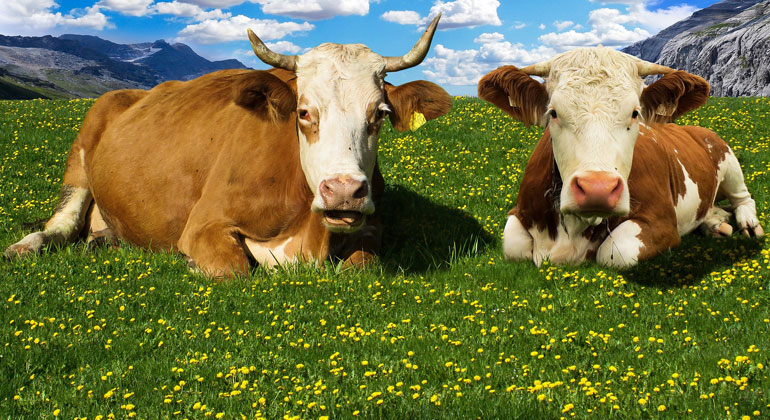Biotechnology to reduce methane emissions from cattle
Methane emissions could be substantially cut through a $7.5-million project to develop slow-release biopolymer technology for cattle containing a gas-reducing bioactive.
The University of Queensland and Department of Agriculture and Fisheries (DAF) collaboration is being funded by Meat & Livestock Australia (MLA) and the MLA Donor Company Limited, to help producers meet the CN30 target to make the meat industry carbon neutral by 2030.
Research lead Professor Mary Fletcher from the Queensland Alliance for Agriculture and Food Innovation (QAAFI) said the aim was to develop biopolymer devices that can be inserted in the stomach of cattle to deliver a continuous, low dose of bioactive.
“We want the technology to fit in with the normal management strategies of northern cattle producers, to find a solution that doesn’t create a major impost in these extensive pastures where daily dosing is simply not practical,” Professor Fletcher said.
“We’re hoping that the producers can make it part of their normal six monthly or annual program, so when they bring the animals in for the normal weighing and assessment treatments that this just forms part of the normal cycle.
“The treatment could be administered in the yard before the cattle are returned to pasture without greatly adding to labour involved.”
Minister for Agricultural Industry Development and Fisheries and Minister for Rural Communities Mark Furner said the biotechnology could be a game changer for the beef cattle industry.
“In extensive grazing systems, supplements are normally delivered through licks, with little or no control of intake by individual animals,” Mr Furner said.
“The ability to ensure each animal receives a sustained dose of a methane-reducing active agent over an extended timeframe would be a fantastic win for the beef cattle industry, helping it achieve its goal to reduce methane emissions – particularly in cattle grazing extensive pastures.”
“If successful, this biopolymer biotechnology could be used to administer other types of treatments to cattle.”
The key to the project is the slow-release biopolymer technology, developed in UQ’s School of Chemical Engineering in a team led by Professor Bronwyn Laycock.
The biopolymer holding the bioactive is used to make a rumen insert — a cylinder-shaped object the length of a human hand.
Cattle will be able to swallow the rumen insert which will then sit within their stomach where it will be degraded by bacteria over time, releasing bioactive and leaving no residue.
Professor Fletcher said biopolymers were already used in human medicine for implantable drug delivery systems.
“The rumen of an animal is a completely different environment, but we’ve proven that the biopolymers can stand up to bacterial activity for a number of months,” Professor Fletcher said.
Department of Agriculture and Fisheries researcher Diane Ouwerkerk will use a fermenter in a laboratory that mimics the conditions in a cow’s rumen to test the rate at which the biopolymer cylinders will degrade and release bioactive before a trial is conducted in cattle.
Professor Fletchersaid the research team would engage with cattle producers at every stage of the process and were looking for people to be involved to ensure a practical solution for industry.
MLA Managing Director Jason Strong said the red meat sector had made tremendous strides towards emission reductions.
“MLA will continue to invest in new technologies and techniques to achieve carbon neutrality by the end of the decade, without compromising livestock numbers,” Mr Strong said.
“The CN30 strategy works hand-in-hand with industry’s vision to double the value of red meat sales as a trusted source of the highest quality protein in the next 10 years.”








